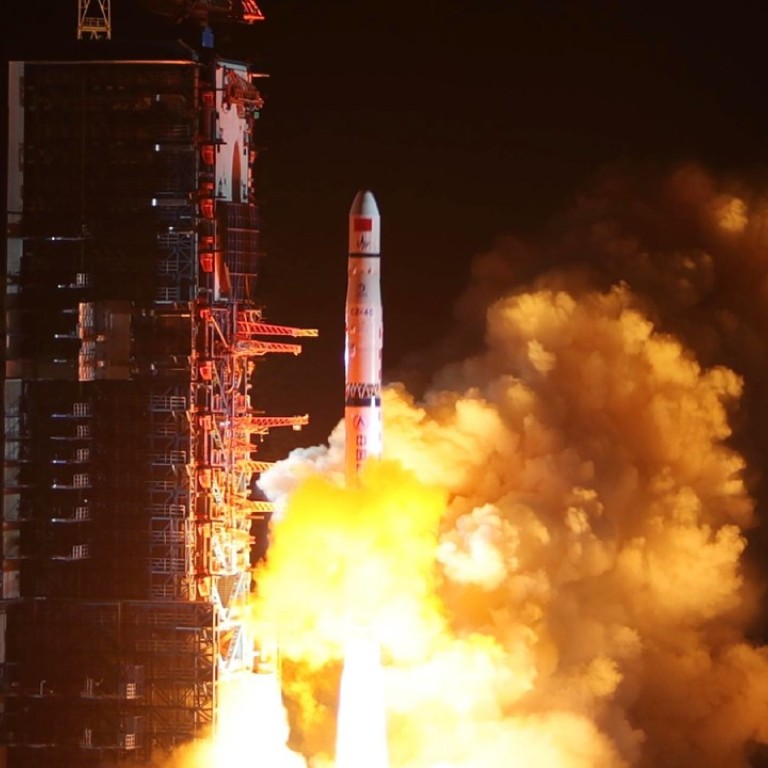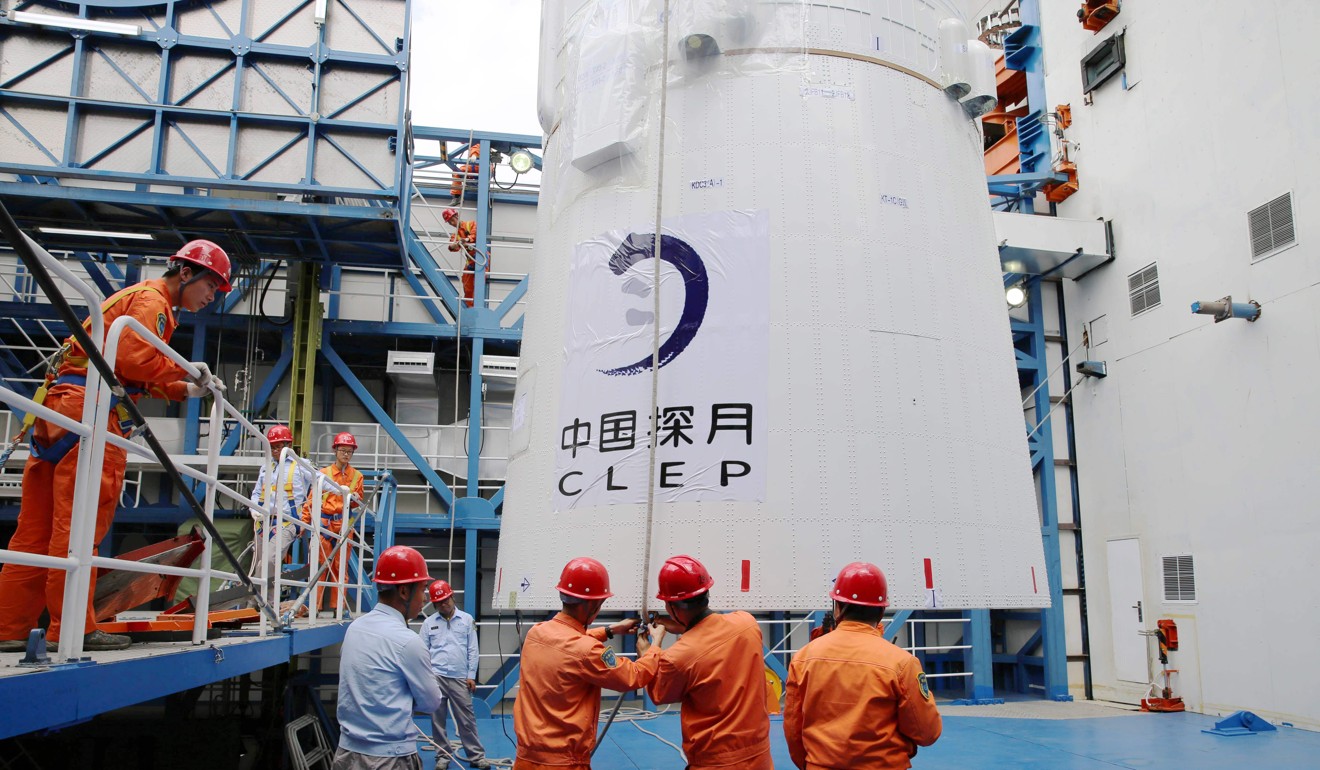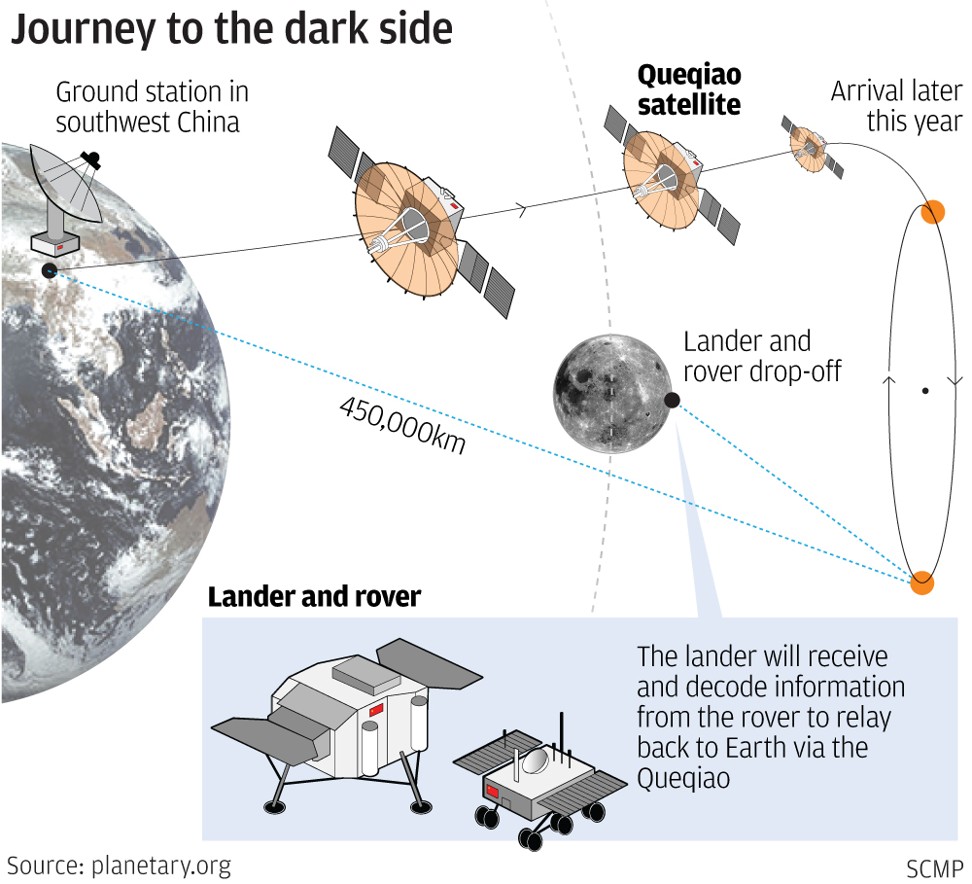
China lifts off in pioneering journey to the far side of the moon
A team of Chinese scientists aims to have a rover exploring the largely unknown lunar terrain later this year
China has launched a satellite in its mission to this year become the first country to explore the far side of the moon.
The Queqiao relay satellite and its carrier, a Long March 4C rocket, lifted off from the Xichang Satellite Launch Centre in southwestern China’s Sichuan province at about 5.28am on Monday, according to the China National Space Administration.
The satellite split from the rocket after 25 minutes and unfolded its solar panels and communication antennas as it headed towards its orbit, the administration said.
“The launch is a key step for China to realise its goal of being the first country to send a probe to soft-land on and rove the far side of the moon,” Zhang Lihua, head of the relay satellite project, was quoted as saying by Xinhua.
The administration said the Queqiao – or “Magpie Bridge” – would relay communications between controllers on the Earth and a lander on the far side of the moon, where the Chang’e 4 lunar probe – named after the moon goddess in Chinese mythology – would be sent later this year.
The Chang’e 4 rover will touch down in the Aitken Basin in the lunar south pole, according to Xinhua. It will be the second Chinese probe to land on the moon, following the Yutu, or “Jade Rabbit”, rover mission in 2013.
The Queqiao weighs 425kg and its mission is expected to take five years. The satellite’s orbit will allow it to stay in constant and simultaneous communication with the lander on the moon and ground stations on Earth.
The far side of the moon is hardly ever directly visible from the Earth and while it has been photographed as far back as 1959, it has never been explored.
Scientists hope the lack of radio interference from the Earth and sun will allow the spacecraft to pick up electromagnetic radiation from the early universe, shedding light on how it was formed.
The satellite is also equipped with the Netherlands-China Low-Frequency Explorer, a radio telescope developed by a group of Chinese and Dutch scientists, which will be used to conduct experiments until the Chang’e 4 lands.
Professor Jack Burns, at the University of Colorado Boulder, told Inkstone that a successful Chang’e 4 mission this year would “advance both lunar sciences and exploration in a significant fashion”.
Burn heads a team of US scientists aiming to put their own low-frequency radio telescope array on the far side of the moon.

Ping said consistent state support had been key to the success of China’s lunar programme.
He said that since its first moon-orbiting mission in 2007, China had maintained a clear goal: to “orbit, land and return”.
The administration said it was planning to send up another lunar rover, the Chang’e 5, next year to collect samples and bring them back to Earth.
China is pouring billions into its military-run space programme, with hopes of having a crewed space station by 2022, and of sending people to the moon in the near future.
Additional reporting by Agence France-Presse


